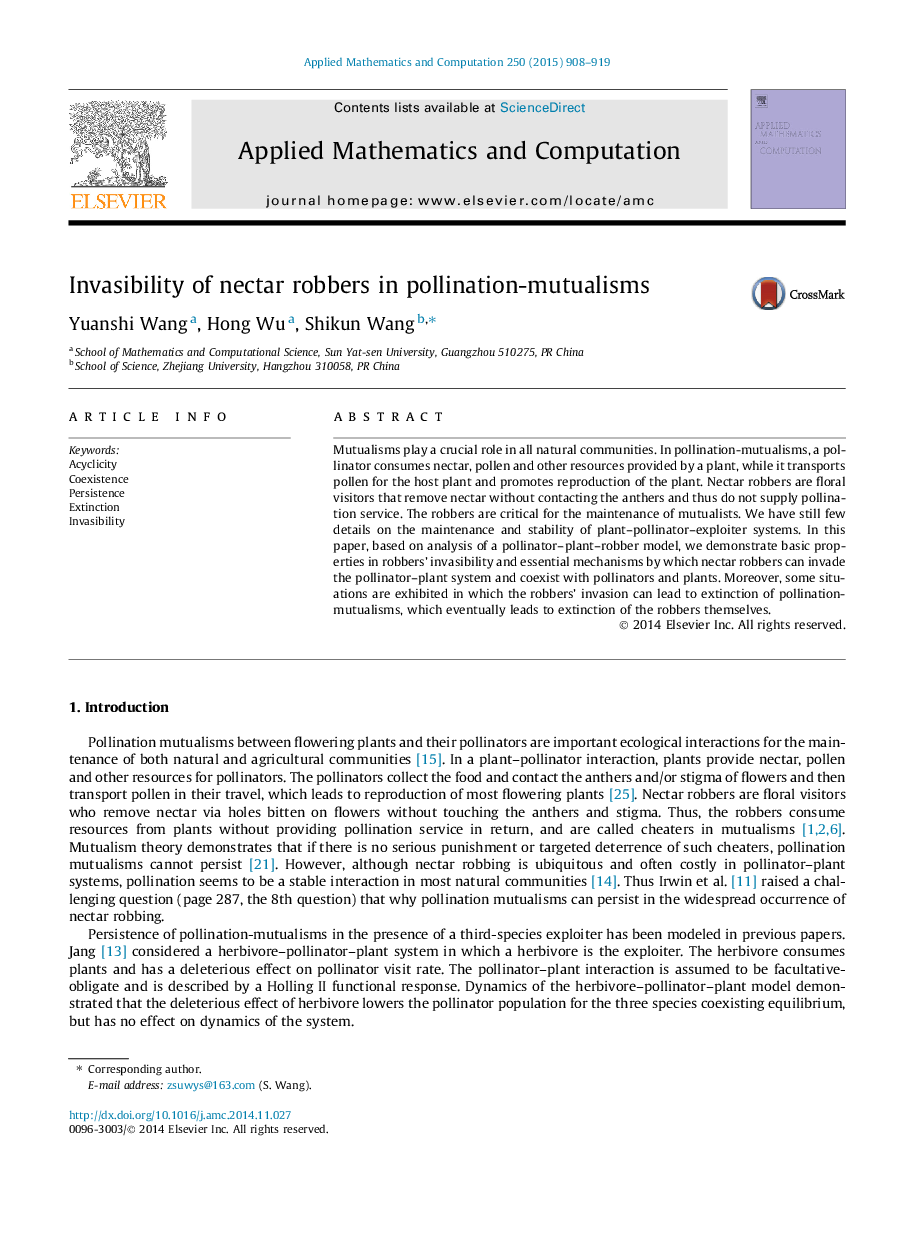| Article ID | Journal | Published Year | Pages | File Type |
|---|---|---|---|---|
| 4627246 | Applied Mathematics and Computation | 2015 | 12 Pages |
•A pollinator–plant–robber model with Beddington–DeAngelis form is presented.•Global analysis of the model is demonstrated.•The robbers with high efficiency can invade the pollinator–plant system.•The three species can coexist if the plants’ efficiency is high.•The robbers’ invasion can lead to extinction of plants and the robbers themselves.
Mutualisms play a crucial role in all natural communities. In pollination-mutualisms, a pollinator consumes nectar, pollen and other resources provided by a plant, while it transports pollen for the host plant and promotes reproduction of the plant. Nectar robbers are floral visitors that remove nectar without contacting the anthers and thus do not supply pollination service. The robbers are critical for the maintenance of mutualists. We have still few details on the maintenance and stability of plant–pollinator–exploiter systems. In this paper, based on analysis of a pollinator–plant–robber model, we demonstrate basic properties in robbers’ invasibility and essential mechanisms by which nectar robbers can invade the pollinator–plant system and coexist with pollinators and plants. Moreover, some situations are exhibited in which the robbers’ invasion can lead to extinction of pollination-mutualisms, which eventually leads to extinction of the robbers themselves.
